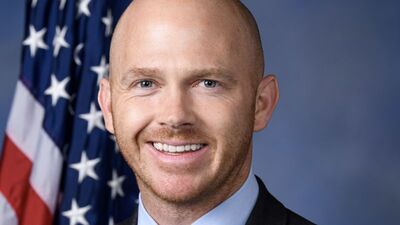The U.S. Environmental Protection Agency today said it will fully evaluate Pennsylvania’s amended plan to help restore the Chesapeake Bay.
Pennsylvania submitted an amended Phase III Chesapeake Bay Watershed Implementation Plan (WIP) to EPA on Dec. 30, 2021, intended to close a 9.8-million-pound gap in planned nitrogen pollution reductions needed to meet its Bay restoration commitments. The state said the amended WIP also includes reductions to compensate for future climate impacts.
“We appreciate that Pennsylvania amended its WIP and engaged counties and other stakeholders in the planning process,” said EPA Mid-Atlantic Regional Administrator Adam Ortiz. “We have begun a thorough review to determine if the plan measures up to Pennsylvania’s commitments to do its share to restore downstream waters and, in the process, improve the health of local rivers, streams, and drinking water.”
Ortiz said the Biden Administration strongly expects state and local partners to “join us in fully meeting our commitments” to achieve new high levels of environmental restoration.
He noted that EPA has provided significant financial and technical resources to support Pennsylvania’s Bay restoration goals – with potentially tens of millions of dollars of funding to come through the Bipartisan Infrastructure Law and other sources to help.
“However, EPA is serious about taking greater federal action to promote progress in Pennsylvania” if the amended plan does not meet 2025 cleanup targets or provide confidence to meet its goals, he said, citing greater federal oversight of permits, increased inspections and enforcement actions as potential options.
With a high percentage of the state’s pollution reductions expected to come from manure controls, EPA called on Pennsylvania to institute agricultural reforms.
“Notable progress has been made by state agencies and the farming community,” said Ortiz, who is planning a multi-day tour of innovative agriculture practices in Lancaster County in the coming weeks. “However, there are several critical missing statewide policies.”
In a letter emailed to state officials on Dec. 23, 2021, Ortiz laid out the seriousness of the expectations, that “existing resources and policies to control pollution in Pennsylvania do not include successful agricultural conservation measures established by downstream jurisdictions, such as a dedicated state agriculture cost share program, improved manure management practices, or requirements for stream buffers or fencing to keep animals from accessing local waters.”
EPA has been working closely with the agricultural community to get more support to small farms for their conservation efforts. Pennsylvania Farm Bureau President Rick Ebert said that additional steps to help farmers and producers achieve clean water and healthy farms are necessary.
“Pennsylvania’s farmers have led the recent effort in achieving nitrogen reductions in the Bay watershed,” said Ebert. “Many farmers want to continue Pennsylvania’s current trend to improve water quality locally in the Bay watershed through increased conservation measures on their farms. But our farmers are also concerned about additional standards they cannot realistically meet. A predictable and reliable source of state funding to finance farm conservation measures would be a huge win in maintaining Pennsylvania’s recent momentum in water quality improvement and providing feasible opportunities for farmers to play a key role in achievement of water quality in the Bay.”
A copy of the amended WIP is available online at: https://files.dep.state.pa.us/Water/ChesapeakeBayOffice/WIPIII/FinalPlan/PA_Phase_3_WIP_Final.pdf









